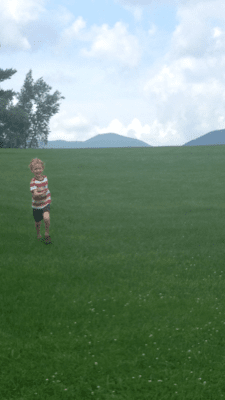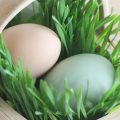
By John, Certified Holistic Health Coach
This January, instead of making the usual resolutions that we’ve given up on by the end of the month, we decided to break it up by dividing some big goals into manageable chunks.
Each month, we invite you to overhaul one aspect of your life to reduce toxins, improve health, and increase your peace of mind. Our promise is that these changes will be easy to implement, helping you avoid resolution overwhelm.
(If you’re just joining us, here is January’s mini resolution on upgrading junk foods, February’s with a medicine cabinet detox, March’s on improving indoor air quality, and April’s five ways to clean up your cleaning products.)
With spring finally here…YAY!… it’s the time of year when some of us get ready for the annual rites of lawn care. That often involves a call to a lawn care specialist who will spread various “potions” on the lawn to make it green and healthy looking. That’s one way to do it. The other way is to get out there and do it yourself!
In either case, there are a few things to consider before digging in.
 Lawn care done the standard, modern way is likely considerably more toxic than you might think. For decades, most commercial lawn care companies have used products that often require a recommendation that pets and children stay off the lawn for a few days after treatment! YIKES! The same goes for many of the lawn care products available to homeowners.
Lawn care done the standard, modern way is likely considerably more toxic than you might think. For decades, most commercial lawn care companies have used products that often require a recommendation that pets and children stay off the lawn for a few days after treatment! YIKES! The same goes for many of the lawn care products available to homeowners.
In layman’s terms, a lot of lawn care is done to create a thick green lawn, free from weeds…but this does not mean the grass is healthy. What’s happening is that the chemistry of these products forces the grass to grow and be green, but that is not the only way to get a great lawn. You can eliminate the toxins and have a great lawn as well.
Grass is part of a much larger web of life. To the degree that the soil beneath the grass is healthy, your lawn will be healthy. To the degree that the trillions of organisms that live beneath your lawn are healthy, the soil will be healthy.
 So there are two paths to a healthy, non-toxic lawn:
So there are two paths to a healthy, non-toxic lawn:
- Use potentially toxic stuff to trick the lawns in appearing healthy,
- Properly feed the soil, thus producing a non-toxic lawn that is actually healthy.
If option #2 appeals to you, here are a few tips to give you a healthy, non-toxic lawn:
1) Over-seed.
It might seem odd to spread new grass seed into an existing lawn, but this is one of the best methods of keeping weeds down and having a healthy, non-toxic lawn.
2) Cut high.
Set your mower to leave at least four inches of grass. This greatly discourages weeds and helps retain moisture. Blades of grass gather sunlight and this feeds the roots. Strong roots = strong grass.
3) Leave it.
Use a mulching mower and leave the clipping on the lawn. Clippings turn into compost/worm food. This is good!
4) Feed it food.
The best lawn food is compost…ORGANIC compost! Spread it into your lawn with a rake or use a spreader like this one. This feeds the organisms in the lawn that help keep it healthy. Composting also helps reduce the amount of water a lawn needs.
5) Smart water.
Water early in the morning and water deeply. This causes deep root growth. Also, select a grass species that is appropriate for your climate and conditions.
6) Feed the soil, not just the grass.
Use organic fertilizers. These release nutrients slowly, giving the micro-organisms time to break them down so that the grass can actually use it. Don’t over feed!
7) Aerate.
This is nothing more than punching lots of small holes into the turf. These give underground organisms a boost and allow for deeper water and fertilizer penetration. It also stimulates grass roots into spreading. Professional lawn care companies have machines made for this task, but DIYers can start on a pair of these. Simply walk around the yard. Good for you and good for your lawn.
You might also consider hiring a lawn care service that is dedicated to using organic methods. Some of the large franchises now offer an “organic” version, but I prefer a specialist who centers their business around organic, non-toxic lawn care and really knows what they are doing.
Go Spring!
If you liked this post, sign up for our newsletter to be alerted when we publish new content like this!









Robert Pearson says
I need a natural reemergent so I can grow a lawn